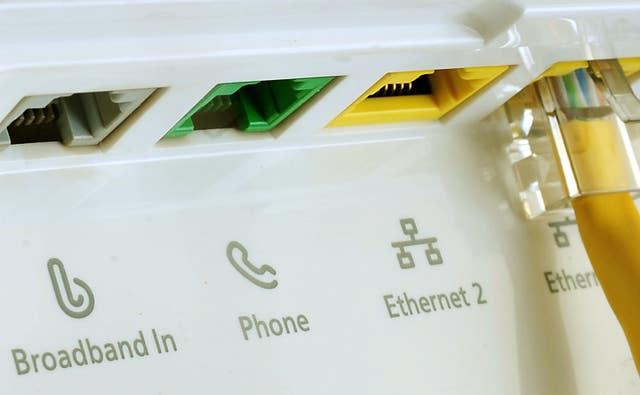
Phone, broadband and pay-TV providers will be forced to alert people when their current contract is coming to an end from Saturday, under new rules which could save some households more than £150 a year.
Ofcom says around 20 million customers are already out of contract – including 8.8 million broadband customers – with many spending more than they need to.
It claims every day, 25,000 broadband customers come to the end of their contract, usually leading to an automatic price hike.
However, 16% of broadband customers do not know if they are in contract, particularly older people, with 21% of over-55s unaware.
Measures introduced by the regulator will mean that home telecom firms must inform bill payers between 10 and 40 days before their contract comes to an end, via a text message, email or letter.
Currently, providers do not have to remind their customers when their minimum contract period is coming to an end or explain what will happen after the contract ends.
Customers who do nothing when their minimum contract period ends are likely to continue on a monthly rolling deal and can face price increases or changes to their original deal.
Under the controls, providers will need to tell them when their contact is up and what they have been paying until now – as well as the price they can expect to pay once their contract is over.

The notification must also state any notice period for leaving their provider, the best deals available, and reveal any prices only available to new customers.
Anyone already out of contract must be sent a reminder every year of the best options on offer.
The average broadband customer could save around £100 a year as a result of the changes, though some could save £150 or more, according to Ofcom research from last year.
It believes around three million could actually pay less by upgrading to a faster broadband package.
“Millions of people are out of contract right now and paying more than they need to,” said Lindsey Fussell, Ofcom’s consumer group director.
“These new rules make it easier to grab a better deal. But you don’t need to wait to hear from your provider.
“Just a few minutes of your time could save you hundreds of pounds today.”
Culture Secretary Oliver Dowden said: “This is great news for consumers and means when someone’s mobile contract ends, their provider will be obliged to give them options to switch and save money.
“Loyalty penalties and poor service are unacceptable so it’s good to see Ofcom taking action and giving people more control over their mobile and broadband bills.”

Enjoy the convenience of having The Sunday Post delivered as a digital ePaper straight to your smartphone, tablet or computer.
Subscribe for only £5.49 a month and enjoy all the benefits of the printed paper as a digital replica.
Subscribe